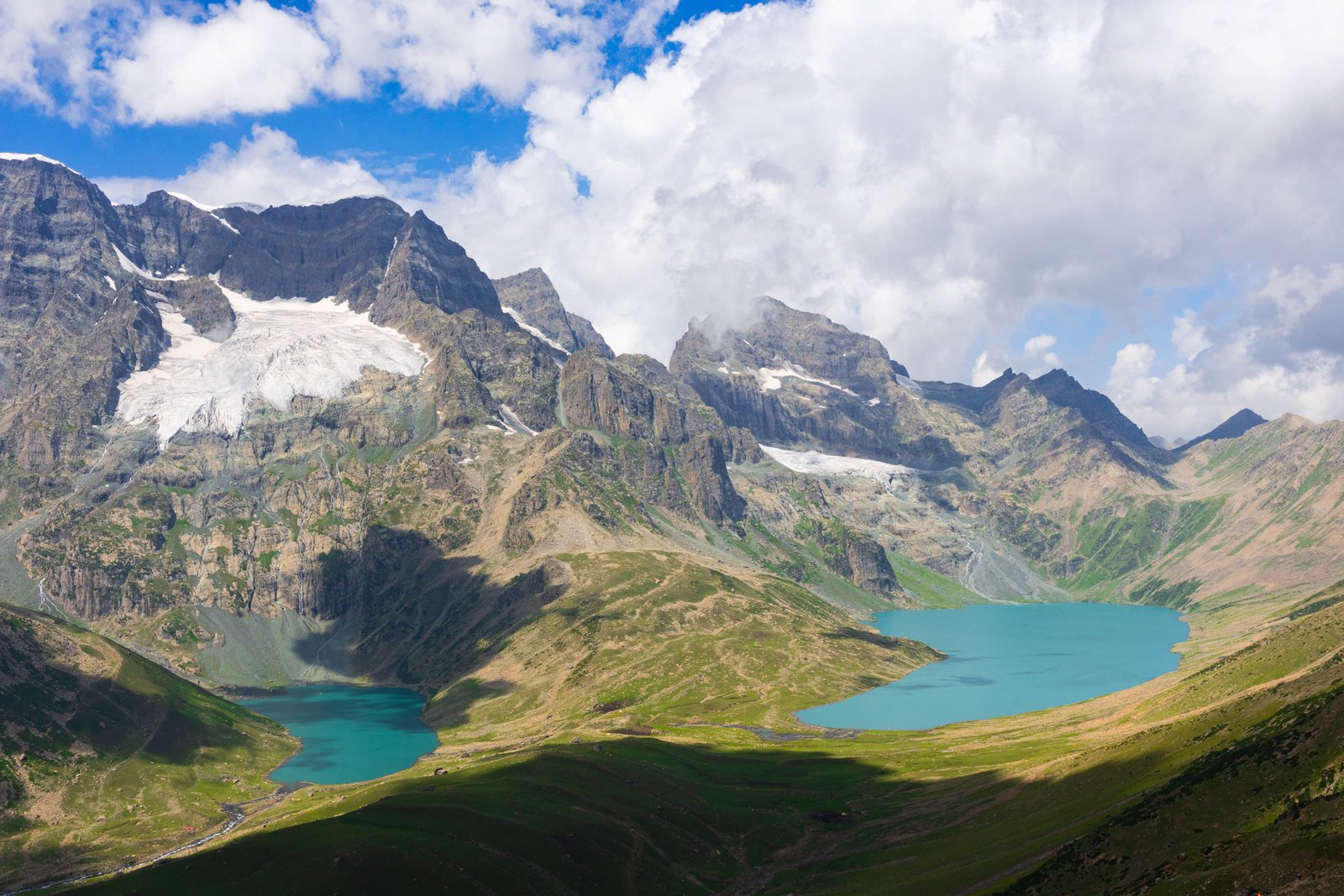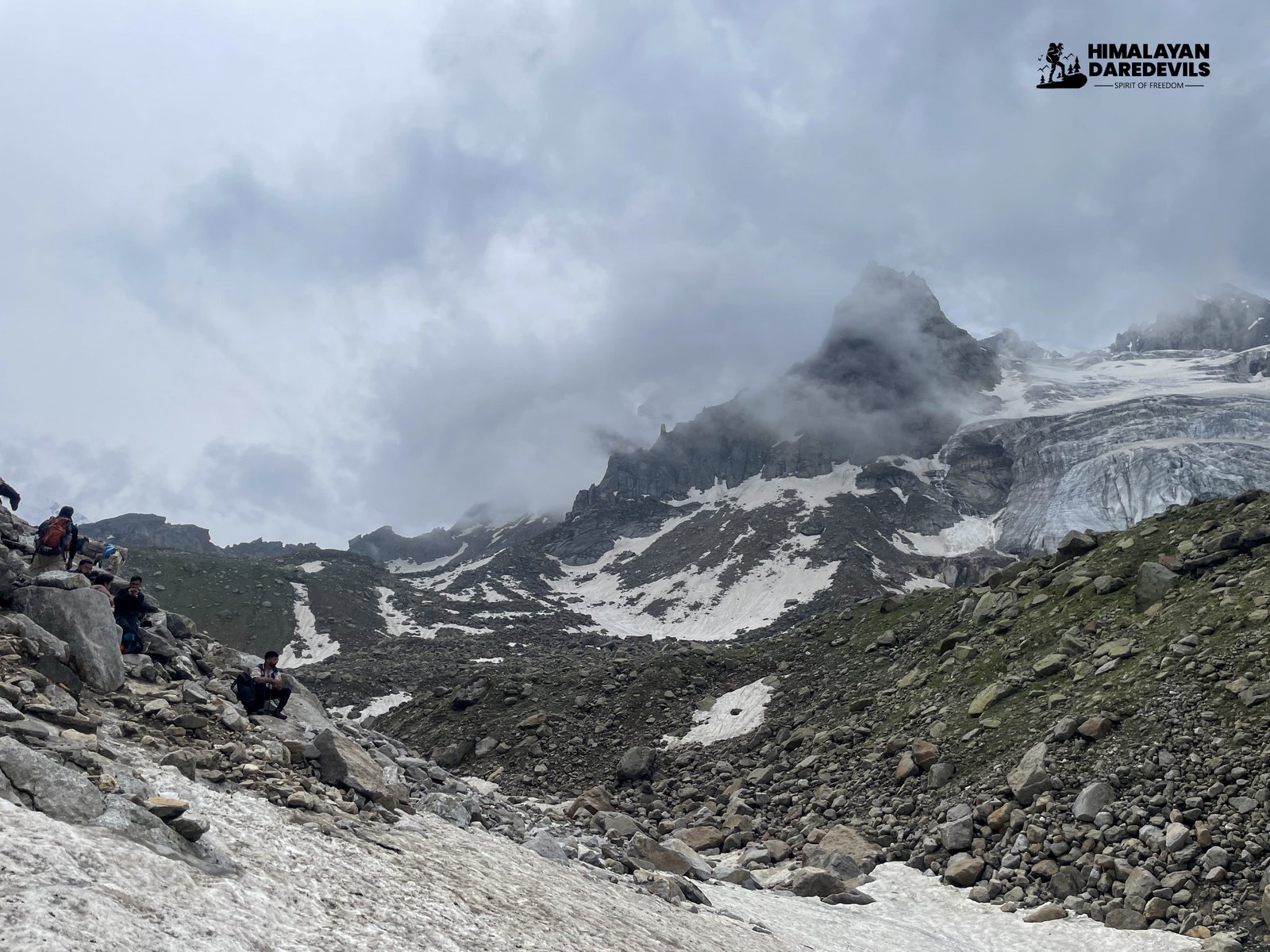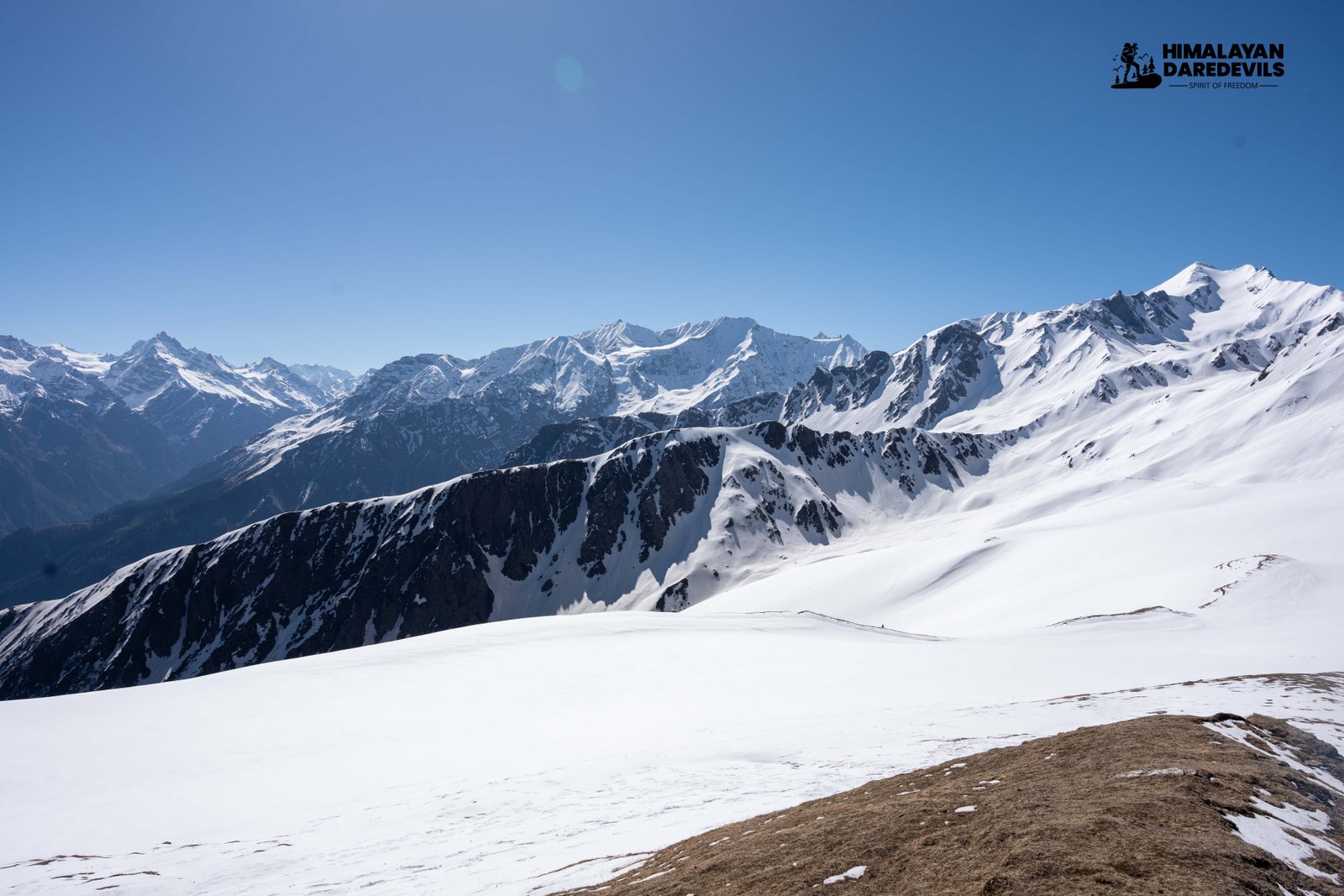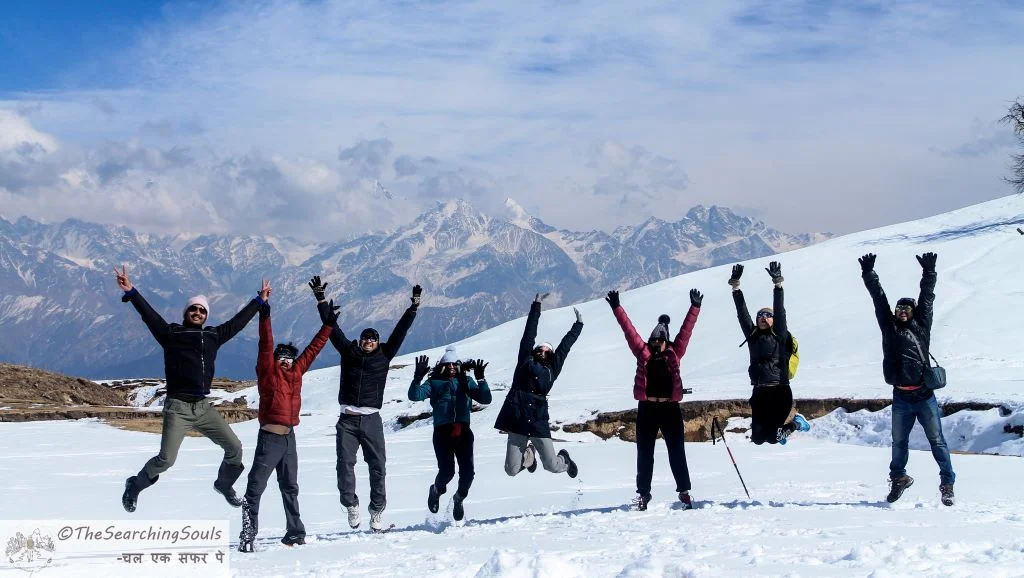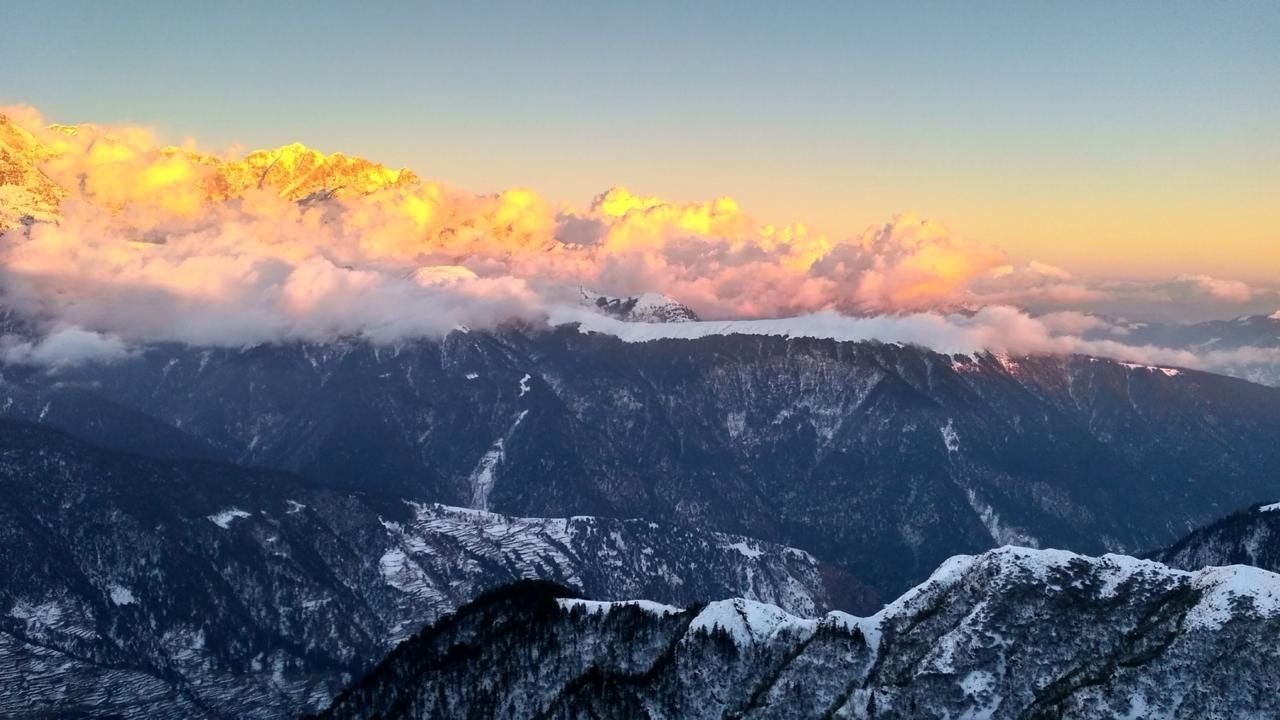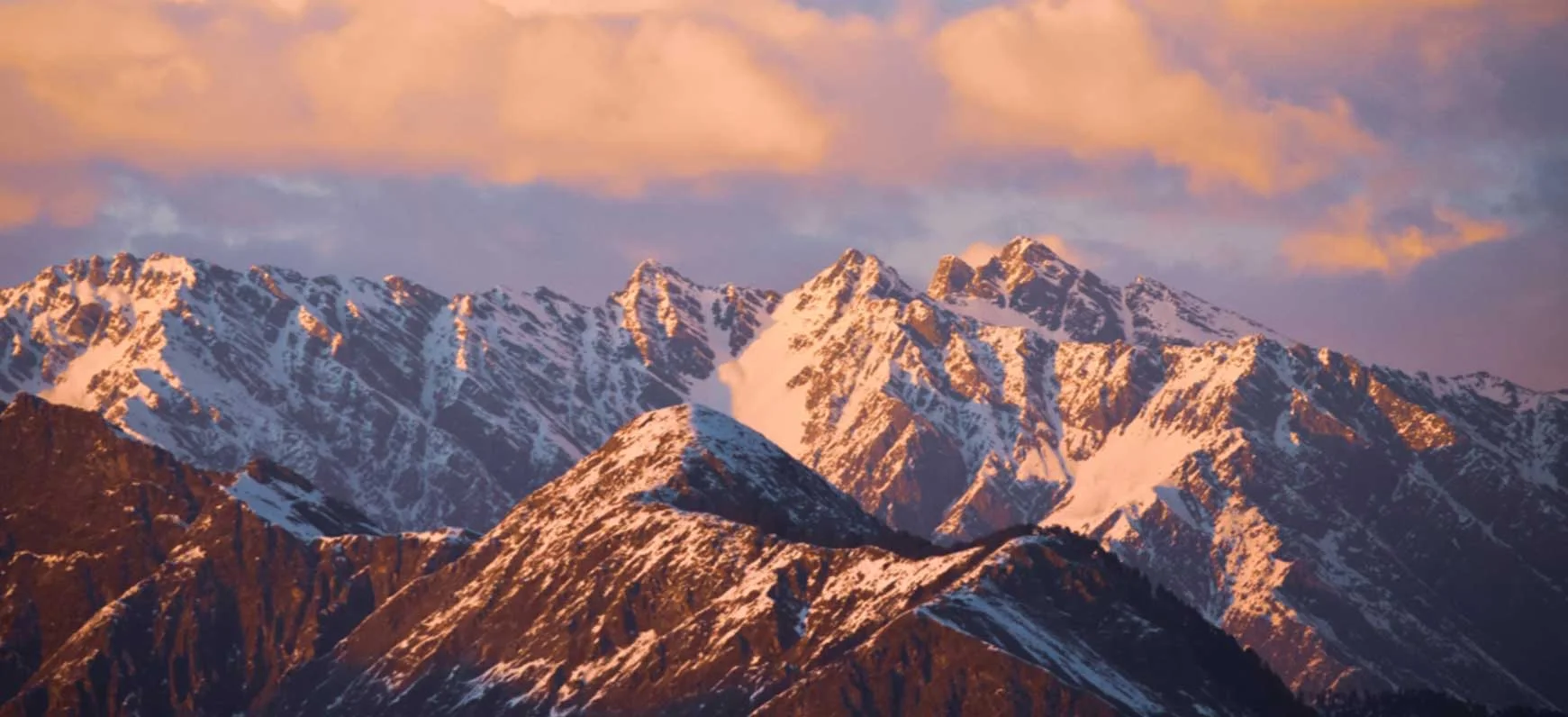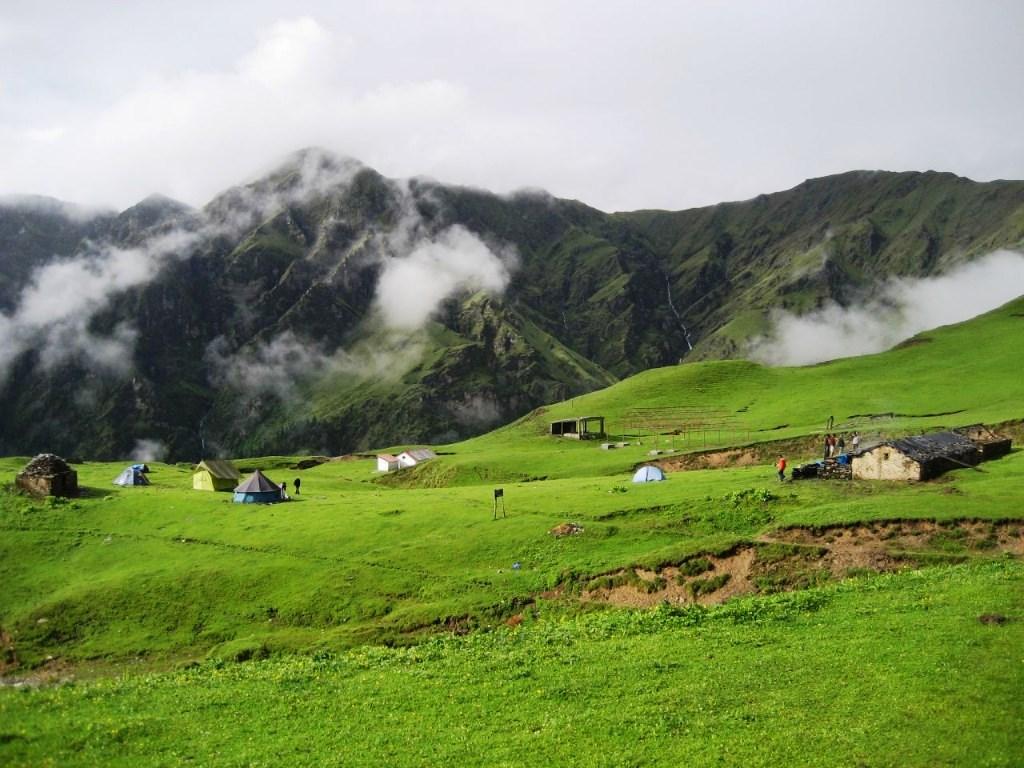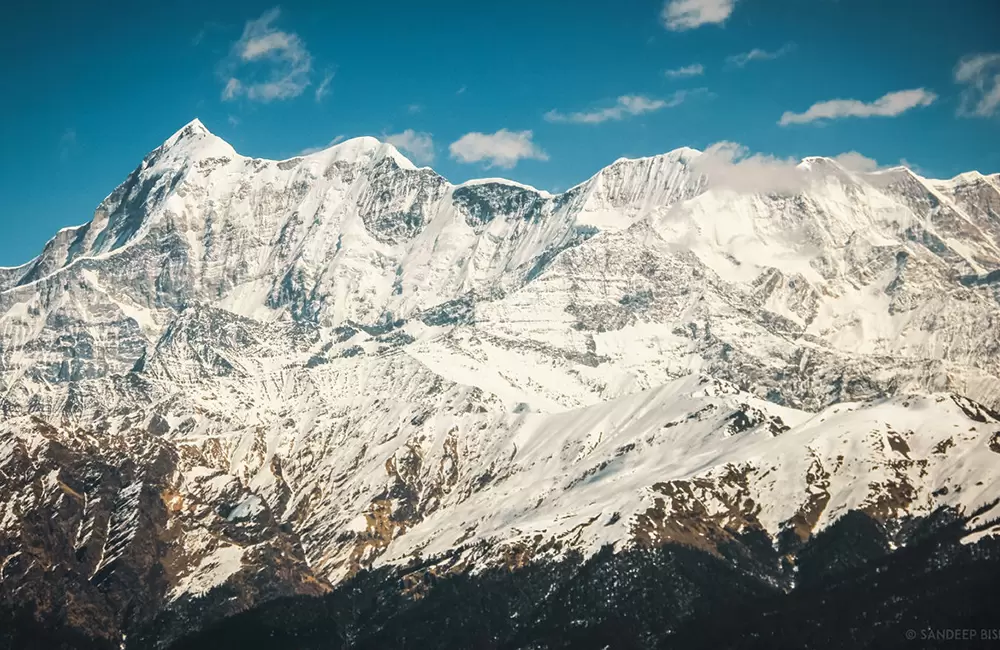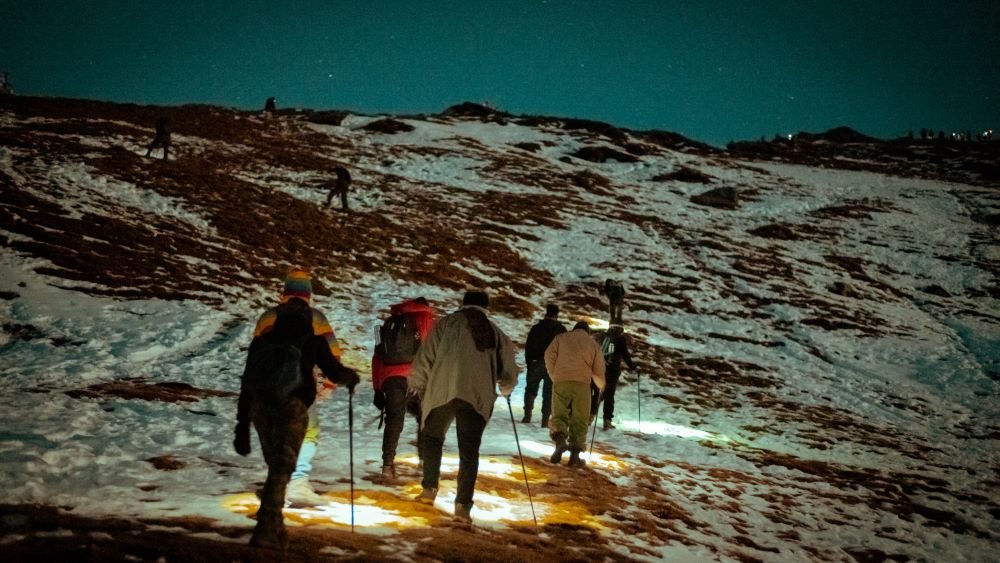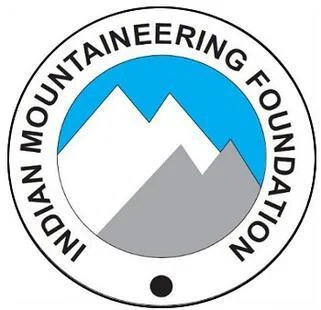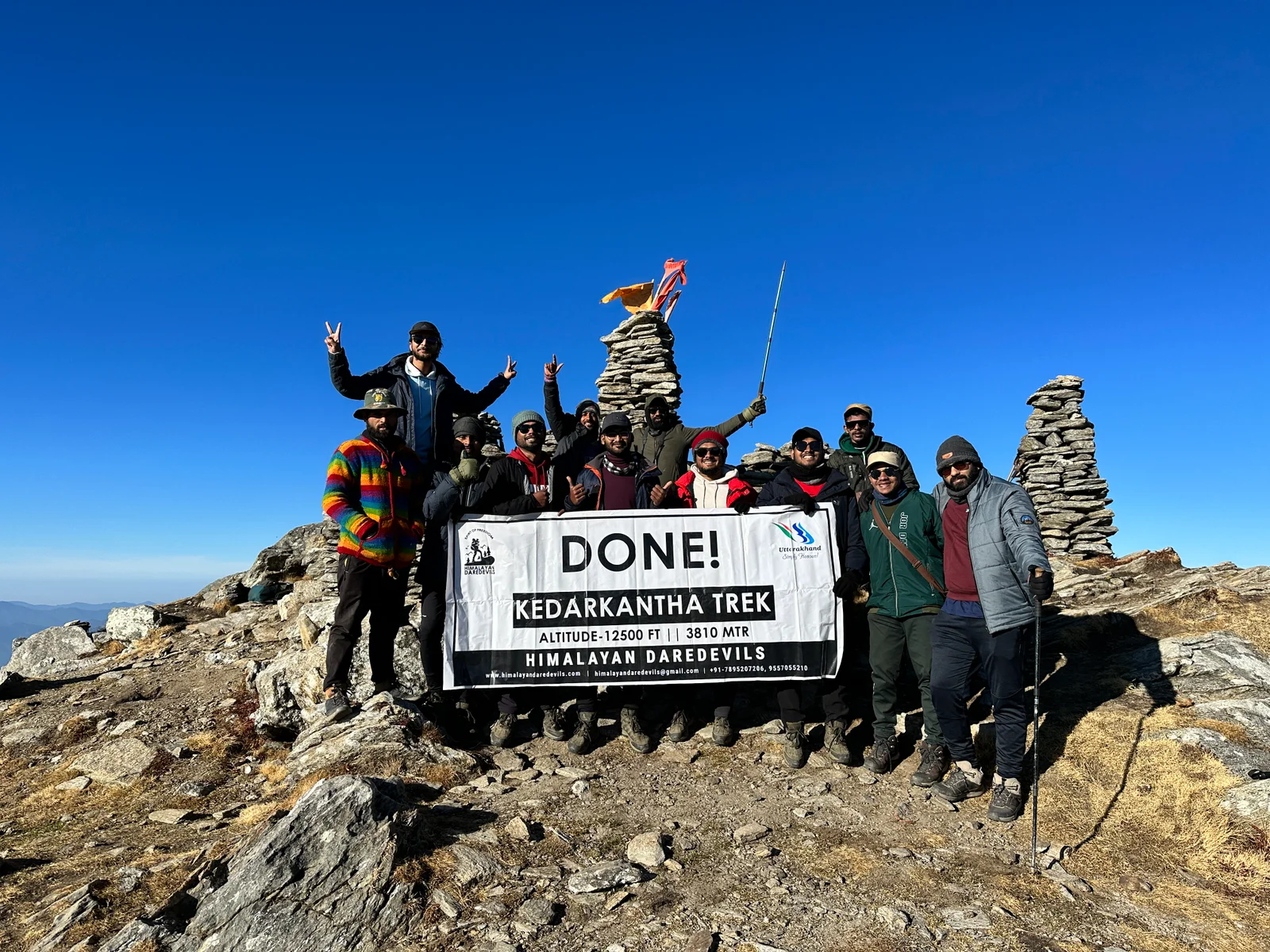12 May 2025
The Indian Summer is brutal and harsh, especially from the month of April to June. The temperature during these months reaches as high as 45°C in the plains of India and a hot and dry wind called loo sweeps across the land. In contrast to this, Summers are the best time for trekking in the Himalayas. It is during summers that all of the colors of Himalayas hidden during the winter months under thick layers of snow come out. The Summer treks in India are filled with meadows that are scattered with colorful wildflowers and green trees of Pine, Birch and Rhododendron sway in such cool breeze that one surely forgets that these are the months of scorching summer.
How to Choose the Right Summer Trek in the Himalayas
The Himalayas is a home to many trails and treks that take you to beautiful locations that seem out of this world. High himalayan passes, never ending lush green meadows, glacial lakes and waterfalls all silently still in various corners of the mountains seem to be waiting for you. So many incredible options does make it a little hard to pick the right adventure for yourself. Whether you are an experienced mountain traveller or a beginner, following the points below would definitely help you in choosing your next Summer trek to the Himalayas:
Difficulty Of The Summer Treks:
The Himalayan landscape is filled with terrains of varying difficulties, some treks are easy as they take less time and are easy to tread on, while others are high altitude with challenging terrain and taking a lot of your time and dedication.
- Beginner Treks: These are treks that take less time and have accessible routes and gradual climbs. Some of the beginner friendly treks are - Kedarnath Trek, Chopta-Tungnath-Chandrashila and Valley of Flowers Trek.
- Intermediate Treks: These treks push you a bit more physically as well as mentally, but also come with spectacular views of the himalayas. Some of the Intermediate treks are- Hampta Pass Trek, Sar Pass, Har Ki Dun, Tarsar Marsar and Roopkund trek.
- Advance Treks: These treks take you deep into the Himalayan wilderness and test you physically and mentally. These treks are for the ones who have an appetite for adventure. Some of the advanced himalayan treks are- Bali Pass trek, Kashmir Great Lakes Trek and Rupin Pass Trek.
Types Of Summer Treks
It is important to know, before you pack your bags and book your trek, what kind of trek you want to go to. All the treks to the Himalayas have something unique to offer.
- For Spiritual Experience, go to the Kedarnath Trek or The Tungnath-Chandrashila trek.
- For Alpine Lakes, treks like KGL Trek, Roopkund Trek and Tarsar Marsar Trek are available.
- For High Altitude Adventure, you can opt for treks like the Hampta Pass, Rupin Pass and Bali Pass Trek.
- For Wildflowers and Meadows, go to the Valley of Flowers Trek or Dayara Bugyal.
How Much Time Do You Have?
There are treks like Tungnath treks that can be completed in a few days, on the other hand there are treks that take 10 days or even more to complete, like The KGL Trek and The Rupin Pass Trek. Not everyone can take two weeks off work and that is why you should know How much time you have for the trip.
Best Summer Treks in the Himalayas for Beginners
There are many great treks that are stunning and also easy for absolute beginners, here are some of them:
Kedarnath Trek
Region: Uttarakhand | Time: 2 days | Distance: 16 KM | Altitude: 11,755 ft (3,584 m)
The Kedarnath Trek is not just a trek, it is a spiritual and cultural experience that takes you back into time and shows you the ancient tradition and beliefs of the land. The well paved trail to reach Kedarnath temple starts from Gaurikund, and along the way you will find plenty of spots to rest and eat. The way is also filled with cascading waterfalls, pine forests and snow-capped peaks. The trek is beginner friendly for someone who is of average fitness. There are also options of Helicopter and pony services available for the weak and elderly.
Chopta–Tungnath–Chandrashila Trek
Region: Uttarakhand | Time: 2–3 days | Distance: 4.5 KM |Altitude: 13,000 ft (3,962 m)
The Chopta-Tungnath-Chandrashila Trek is an easy trek and is abound with natural vistas of green meadows and red rhododendron, this makes it one of the most rewarding treks that the Himalayas has to offer. Starting from Chopta which is often called the Mini Switzerland of India, the trek reaches Tungnath which is the Highest Shiva Temple in the world. From Tungnath Temple at a distance of about 1 to 2 KM uphill is the Chandrashila Summit which offers you the 360° panoramic view of all the great Himalayan peaks like the Nanda Devi and Trishul.
Valley of Flowers Trek
Region: Uttarakhand | Time: 6–7 days | Distance: 16 KM | Altitude: 12,000 ft (3,658 m)
The Valley of Flowers Trek is a UNESCO World Heritage Site and one of the most popular treks in India. The trek is perfect for beginners as there is no steep ascent or tough terrains waiting for you here. The trail begins from Govindghat and leads to Ghangaria, the base village. From here after a day of hiking you reach a valley that is blooming with almost 500 different varieties of wild alpine flowers. The trek to the valley is well defined and is filled with excellent scenery. The Valley Of Flowers Trek is also at a close distance from the Hemkund Sahib and many trekkers visiting the Valley add this destination to their journey as well.
Challenging Himalayan Treks for Experienced Adventurers
Here are some of the Challenging Himalayan Treks that are for the Experienced Adventurers:
Bali Pass Trek
Region: Uttarakhand | Time: 8–9 days | Distance: ~60 KM | Altitude: 16,200 ft (4,938 m)
The Bali Pass Trek is a high altitude expedition that connects the Har ki Doon Valley to the Yamunotri Dham. The remote and rugged terrain of this trek is filled with challenges, you will start from the green meadows and soon find yourself walking over thin ridges and snowfields that seem to go on forever. When you reach the summit of the Bali Pass you see around you the tall mountain peaks from Bandarpoonch to Swargarohini, a truly beautiful view. To Trek to the Bali Pass you must be fit both mentally and physically.
Hampta Pass Trek
Region: Himachal Pradesh | Time: 5–6 days | Distance: ~35 KM | Altitude: 14,100 ft (4,298 m)
The Hampta Pass is another high altitude and difficult trek which offers a dramatic transition from lush green valleys of Kullu to the stark, barren landscapes of Lahaul. The trekkers go from alpine meadows to rocky terrain and then to snowfields all this to reach the highest point of the trek, the Hampta Pass. The challenging trek requires you to be physically fit and also to have some prior trekking experience.
Sar Pass Trek
Region: Himachal Pradesh | Time: 5–6 days | Distance: ~48 KM | Altitude: 13,800 ft (4,206 m)
The Sar Pass trek starts from Kullu and takes you on a beautiful and thrilling journey through the Parvati Valley. The trek goes through rustic villages and alpine meadows, gradually taking you to the snow capped mountains. The trek is not highly technical but the steep ascents and unpredictable mountain weather requires good physical fitness and some prior trekking experience.
Offbeat Himalayan Trails That Are Still Underrated
The famous locations in the Himalayas sometimes get overcrowded, this takes away the peace and serenity for which the trekkers come from far away places to climb the mountains. There are many treks that have not been over commercialised and have kept their wild and untouched nature alive.
Tarsar Marsar Trek
Region: Kashmir | Altitude: ~13,000 ft | Time: 7 days | Distance: 45 to 50 KM | Difficulty: Moderate
The Tarsar Marsar Trek takes you to the alpine lakes cradled in valleys situated high up in the hills. The twin lakes, approximately 10 KM apart from each other, are filled with crystal clear waters trickling down from the snow capped mountains high above them. Unlike many other alpine lakes in India, it is allowed to camp next to the Tarsar Lake; this adds to the charm of the trek as one can sit next to its water and see the rising and setting sun. The trek is easy to climb without any steep slopes or tough terrains.
Har Ki Dun Trek
Region: Uttarakhand | Altitude: ~11,700 ft | Time: 6–7 days | Distance: 50 KM | Difficulty: Moderate
‘Har Ki Doon’ means the valley of Gods and truly the scenic vistas that you find along this trek justify this name. The trek winds through ancient villages, meadows and tall pine forests. While walking on the treks you see the views of the Swargarohini peaks out there in the distance. The trek is perfect for someone who wants to choose something that is a bit different from the mainstream treks.
Ideal Time and Weather Conditions for Summer Treks in 2025
The ideal time to visit the Summer Treks is from mid April to early July. Trekking during these months you will find snow cleared trails, blooming meadows and a stable weather.
Weather Overview
The weather during the summers is great for trekking to the Himalayas. You will find clear skies and vibrant trails during these months
Uttarakhand & Himachal (April – July)
- Day Temp: 12°C to 22°C
- Night Temp: 0°C to 8°C
Kashmir (April - June)
- Day Temp: 8° C to 18°C
- Night Temp: -3°C to 6°C
Packing Checklist for a Safe and Comfortable Summer Trek
You must be prepared for the unpredictable weather of the high himalayas packing the right gear for any condition;
Base layer (thermal tops and bottoms): Moisture-wicking, worn next to skin
Mid-layer (fleece or light down jacket): Provides insulation
Outer layer (windproof, waterproof jacket): Protects from rain/snow
Trekking pants: Quick-dry, warm, and flexible
Gloves: Waterproof outer + fleece inner
Woolen cap and neck gaiter
Socks: 3–4 pairs, woolen + synthetic mix
UV sunglasses (to avoid snow blindness)
Sunscreen (SPF 50+) and lip balm
Trekking pole (essential for descents)
Headlamp (with spare batteries)
High-ankle waterproof trekking boots with good grip.
To fully enjoy the Himalayan Treks it is important that you are physically fit, and are carrying the right gear and also getting the right nutrients, to fully enjoy the trekking experience. To come unprepared is to cause unnecessary hassles that affect the overall experience of your trek.
Safety Tips, Permits, and Responsible Trekking Practices
The remoteness of the Himalayas adds to the beauty but also comes with its challenge. It is important for the experienced trekker as well as a well prepared first timer to keep in mind these Safety tips while trekking to the Mountains.
AMS and Acclimatize
At over 3000 meters above sea level the risk of getting altitude sickness increases (AMS). The symptoms of altitude sickness include headache, nausea, dizziness and shortness of breath.
To avoid getting AMS you must acclimatize, meaning you should give your body time to get used to the altitude and climb up gradually, take rest before climbing up to the next campsite. Along with this you should avoid alcohol, smoking and excess caffeine while keeping yourself hydrated and eating nutritious meals.
Train In Advance For the Trek
Trekking to the Himalayas requires you to be physically prepared in advance. The comfort of being able to endure the elevation and the stamina to keep on climbing adds to the experience for the better. You should start at least 4 to 6 weeks in advance and adds the following to your physical training:
- Cardio (running, brisk walking, stair climbing)
- Leg Workouts (squats, lunges, step-ups)
- Core workouts (planks, mountain climbers)
- Practice day hikes with a backpack
If you are able to jog for 5 KM under 35 minutes and climb 20 floors without breaking a sweat, you should consider yourself prepared.
Follow the Guide
Do not go off route during the trek, the himalayas are remote and dangerous it might be difficult to find your way back once you get lost. It is important that you trust and follow your trek guide.
Pack The Right Gear
You must carry the right gear so that your trip is comfortable and safe. Here are some equipment that would make the trip easy:
Good Trekking Shoes: Waterproof, high ankled and strong gripped.
Rain Gear: Raincoats and Rain covers
Head lamps and Power Bank: For night
Medical Kit: Painkillers, bandages and blister care. Moisture-wicking base layer
Insulating fleece/down mid-layer
Permits:
Various permits are required when you are trekking to the himalayas, like the Forest Entry Permit, Camping Permit etc. A good trekking company takes care of these permits for you so that you don’t have to go from office to office.
Trekking Responsibly:
The Himalayas offer a great escape from the hustle and bustle of the modern world. The mountains have been the destination for spirituality and peace for many years for the same reason and so it is important to respect that and to ensure that you trek responsibly, leaving no traces and respecting the local culture while preserving the natural ecosystem.
Conclusion:
The snow capped mountain peaks and the lush green meadows of Himalayas offer a recluse from the scorching summer heat of the plains. These mountains are for everyone, for first timers and old timers, for someone looking for a weekend escape or for someone who wants to get lost in the mountains for weeks.
At Himalayan Daredevils we provide exciting and affordable summer trek packages. With an experienced team of experts and guides we ensure that your visit to the Himalayas is safe and enjoyable.

